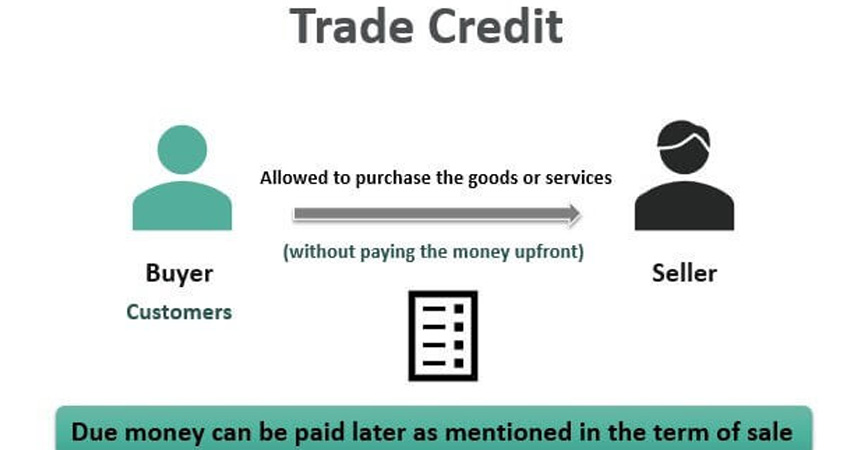What is Trade Credit? From a Foreign Exchange Point

![]()
Trade Credit : Consumer permitted to buy products on credit sort of business finance and to pay the provider at later time.Businesses can finance short-term expansion and free up cash flow by using trade credit.
Depending on the accounting system employed, trade credit might complicate financial accounting.
Regulators typically support trade credit financing on a worldwide scale, which can open doors for new financial technology solutions. As they sold items but not gotten paid. Suppliers typically at disadvantage with trade credit.
What is Trade Credit?
Business-to-business (B2B) agreement known as trade credit allows customers to make purchases of goods without paying in cash up front. Make payments to suppliers at a later date. Businesses that use trade credits typically give customers 30,60, or 90 days to make payment.
Trade credit can compared to a form of 0% financing. It increases organization’s assets while deferring payment for certain amount of products to the future. It requires no interest payments throughout the repayment period.
In import deals, the phrase “trade credit” frequently used. It means that the Indian importer is obtaining financing in order to do international trade. Borrowing in foreign currency or from a non-resident of India is a capital account transaction. Hence the RBI must grant clearance.
However, the RBI has provided broad clearance with restrictions up to a specific amount. Both supplier and buyer credit together referred to as “trade credit.”
Trade credit
According to the RBI, credit lines granted by foreign suppliers, banks, financial institutions. And other recognized lenders for imports of capital or non-capital items. That approved under the Foreign Trade Policy. For individuals who work in importing firms for bankers and for auditors. It’s crucial to comprehend the RBI requirements as well as other useful advice.
Buyer credit
Conventional source would be to obtain cash credit from an Indian bank at the customary current INR linked rates. When an importer needs money to pay the import bill and to finance the inventory arrived. A different option is for the importer to ask the supplier to extend credit.
The supplier has the option to add interest to the price or charge it separately for the credit duration. There will be a visible interest expense if a bank or other financial institution from another country provides financing for this [buyers’ credit].
In each of these scenarios, the interest rate will be based on the interest pertaining to the invoice’s currency. The interest rate for the majority of foreign currencies, such as USD or Euro, will be significantly lower than that for INR, thus the importer enticed to use such credit.
If the credit obtained in a foreign currency, the importer exposed to exchange risk. A derivative instrument like a forward contract can used to hedge this. The temptation will increased if the cost of protection (such as a forward premium) plus the foreign interest rate remains lower than the INR rate.

The Importer Should be Aware of the Following:
Customs duty if any correspondingly greater the invoice price loaded with the interest cost.
Importer Might Need to Establish an LC through the Indian Bank in Order to Access Suppliers’ Credit.
Importer could be required to produce a bank guarantee from an Indian bank in order to obtain buyers’ credit. These have costs, which the importer should take into account when calculating the total cost.
There will be withholding tax on the interest paid to a resident outside of India (the supplier in the case of a supplier’s credit, if the interest is specifically indicated, or the foreign lender in the case of a buyer’s credit). This raises the price even more.
Recall that a branch of an Indian bank is treated as a resident entity for purposes of foreign exchange because its head office is located in India and controls it.
As a result, even though there is a foreign exchange outflow in the form of interest, no withholding tax is due if the lender abroad is a branch of an Indian bank [for example, SBI or BOB]. This is because the interest is paid to a “resident” firm.
Although it may seem nonsensical, importers and banks take advantage of this law. Because of this, Indian bank branches abroad offer “quotes” that are more favourable to importers than those provided by Western banks.
Difference Between the Interests Paid on INR Borrowing in the Form of Cash Credit
The interest on a borrowed foreign currency, such as USD, plus the cost of hedging (such as a forward premium), as well as the price of a letter of credit, a guarantee, and other documentation, as well as any implications for customs duties and withholding tax, if applicable.

Visit us : www.milliva.com





